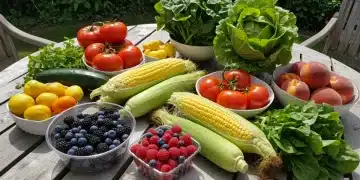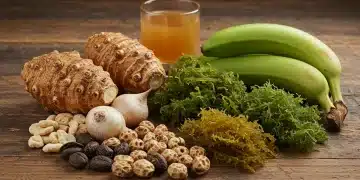Spring 2025 Detox: Natural Foods to Revitalize Your System
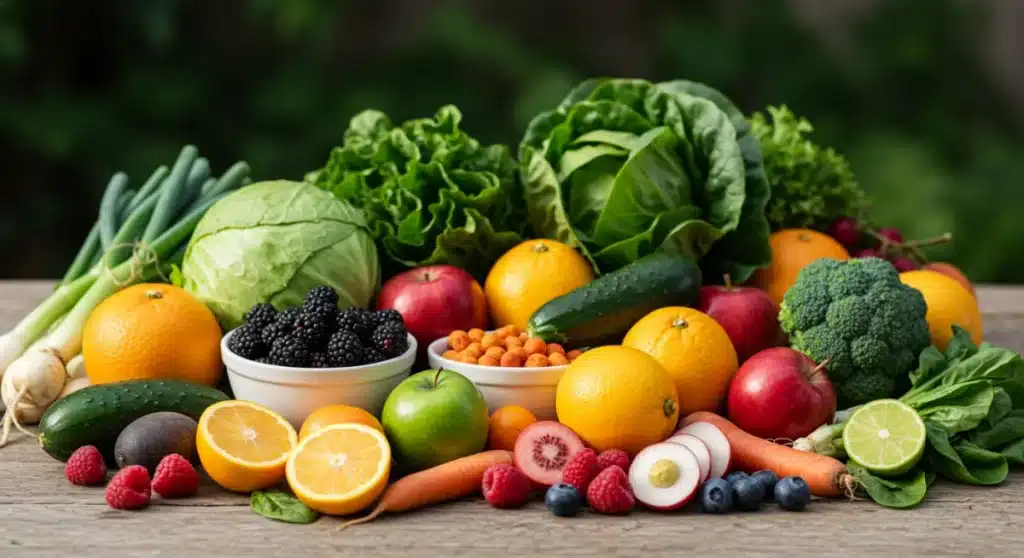
Embracing a natural food detox in Spring 2025 offers an optimal opportunity to revitalize your system, leveraging seasonal produce to cleanse and nourish your body for enhanced well-being and sustained energy.
As winter’s chill recedes, the arrival of spring brings a natural urge for renewal and rejuvenation. For Spring 2025, a focus on natural foods detox offers an unparalleled opportunity to revitalize your system, shedding the sluggishness of colder months and embracing vibrant health.
Understanding the spring detox philosophy
The concept of detoxification, often simplified to extreme fasting or restrictive diets, is fundamentally about supporting your body’s innate ability to cleanse and renew itself. In Spring 2025, this philosophy centers on integrating natural, whole foods that inherently aid these processes, rather than relying on artificial supplements or harsh regimens. It’s about providing your body with the optimal nutrients to function at its best, naturally eliminating toxins accumulated over time.
This approach emphasizes gentle support for the liver, kidneys, and digestive system, which are your body’s primary detoxification organs. By consuming nutrient-dense foods, you empower these organs to work more efficiently, leading to improved energy levels, clearer skin, better digestion, and a strengthened immune system. The seasonal shift of spring perfectly aligns with this goal, offering an abundance of fresh produce that is naturally cleansing and revitalizing.
The science behind natural cleansing
Our bodies are equipped with sophisticated detoxification pathways. The liver, for instance, processes toxins in two phases, converting harmful substances into less toxic compounds that can be excreted. The kidneys filter waste from the blood, while the digestive system eliminates waste products and prevents toxins from re-entering the bloodstream. A natural food detox supports these pathways by:
- Providing antioxidants that protect cells from damage.
- Supplying essential vitamins and minerals for enzymatic reactions.
- Offering fiber to promote regular bowel movements.
- Ensuring adequate hydration for kidney function.
Understanding these mechanisms helps us appreciate that a spring detox isn’t about deprivation, but about intelligent nourishment. It’s a holistic approach that considers diet, hydration, and lifestyle factors to optimize your body’s natural cleansing capabilities. By choosing the right foods, you’re not just ‘detoxing’; you’re actively building a more resilient and healthier you.
Ultimately, the spring detox philosophy is a commitment to listening to your body and providing it with what it truly needs to thrive. It’s a mindful practice that extends beyond just diet, encompassing stress reduction and physical activity, all working in harmony to reset and rejuvenate your entire system for the year ahead.
seasonal spring foods for optimal cleansing
Spring 2025 offers a bounty of fresh, seasonal produce that is perfectly suited for a natural food detox. These foods are not only delicious but also packed with specific nutrients that support detoxification pathways and overall well-being. Incorporating them into your daily meals can significantly enhance your body’s natural cleansing abilities.
Think vibrant greens, crisp vegetables, and tart berries – nature’s way of signaling renewal. Choosing seasonal produce ensures you’re getting foods at their peak freshness and nutritional value, often locally sourced, which further reduces environmental impact and supports local agriculture. This mindful selection is a cornerstone of an effective and sustainable spring detox.
Leafy greens: nature’s scrub brush
Leafy greens like spinach, kale, arugula, and dandelion greens are powerhouses of nutrients. They are rich in chlorophyll, which helps cleanse the blood, and contain compounds that support liver function. Their high fiber content also aids digestion and promotes regular elimination.
- Spinach: High in iron and vitamins A, C, and K, supports blood health.
- Kale: Packed with antioxidants and sulforaphane, a liver-detoxifying compound.
- Dandelion greens: Known for their diuretic properties, supporting kidney cleansing.
- Arugula: Offers a peppery kick and contains glucosinolates, which aid detoxification.
These greens can be easily incorporated into salads, smoothies, or lightly sautéed dishes. Their versatility makes them a staple for any spring detox menu.
Cruciferous vegetables: liver support heroes
Broccoli, cauliflower, Brussels sprouts, and cabbage are part of the cruciferous family, renowned for their detoxifying properties. They contain sulfur-rich compounds that assist the liver in its detoxification processes, particularly Phase II detoxification, which helps neutralize harmful substances.
Adding these vegetables to your diet provides a significant boost to your body’s cleansing mechanisms. Steaming or lightly roasting them preserves their nutritional integrity and makes them easily digestible. Aim for a variety to benefit from their diverse nutrient profiles.
Berries and citrus: antioxidant powerhouses
Spring brings a fresh wave of berries like strawberries and blueberries, alongside citrus fruits such as lemons and grapefruit. These fruits are loaded with antioxidants, particularly vitamin C, which protects cells from oxidative damage and supports immune function. Lemons and grapefruits are especially beneficial for stimulating digestive enzymes and aiding liver function.
Start your day with a glass of warm lemon water to kickstart your metabolism and aid digestion. Incorporate berries into your breakfast, snacks, or desserts for a sweet and nutritious boost. Their natural sugars are a healthier alternative to refined sugars, which can hinder detoxification efforts.
incorporating detox foods into your daily routine
Successfully integrating detox-friendly natural foods into your daily routine for Spring 2025 doesn’t have to be complicated or time-consuming. Small, consistent changes can yield significant results, making the detox process feel natural and sustainable. The key is to make conscious choices about your meals and snacks, focusing on nutrient density and hydration.
Begin by planning your meals around seasonal produce, making them the star of your plate. This approach naturally reduces your reliance on processed foods and encourages a more wholesome diet. Remember, a detox is not about perfection, but about progress and making healthier choices consistently.
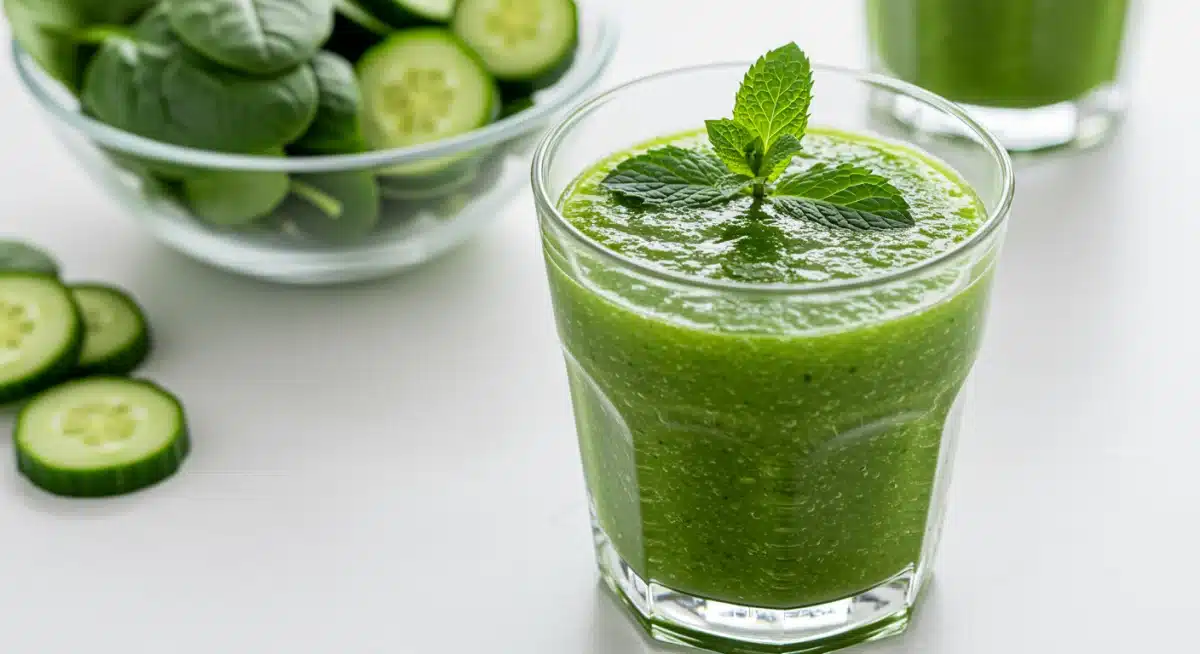
Breakfast: starting fresh
Your morning meal sets the tone for the day. Opt for options that are light, hydrating, and packed with nutrients to kickstart your detoxification processes.
- Green smoothies: Blend spinach, kale, cucumber, apple, and a squeeze of lemon for a powerful detox drink.
- Oatmeal with berries: Cooked oats provide fiber, while fresh berries add antioxidants.
- Avocado toast: Whole-grain toast topped with mashed avocado and a sprinkle of chili flakes.
Avoid heavy, processed breakfast foods that can burden your digestive system. Focus on fresh ingredients that provide sustained energy without the sugar crash.
Lunch: light and energizing
For lunch, aim for meals that are satisfying yet light, allowing your body to continue its cleansing work without feeling sluggish. Salads are an excellent choice, offering endless possibilities for customization with spring produce.
Create vibrant salads with a base of mixed greens, adding various chopped vegetables like bell peppers, carrots, and radishes. Include a source of lean protein such as grilled chicken, fish, or legumes. Dressings should be light, preferably olive oil and vinegar-based, avoiding creamy, heavy options.
Dinner: wholesome and restorative
Dinner should be a time for nourishing your body and preparing it for rest and repair. Focus on easily digestible meals that are rich in vegetables and lean proteins. Steaming or baking are preferred cooking methods to retain nutrient content.
Consider a baked salmon with steamed asparagus and a side of quinoa. Or a vegetable stir-fry with plenty of broccoli, bok choy, and snow peas. Avoid late-night eating and heavy meals close to bedtime to allow your digestive system adequate time to process food before you sleep.
Snacks: smart choices
When hunger strikes between meals, reach for healthy snacks that support your detox goals. Fresh fruit, a handful of nuts, or vegetable sticks with hummus are excellent choices. Stay away from processed snacks that are high in sugar, unhealthy fats, and artificial ingredients.
the role of hydration in spring detox
Hydration is an often-underestimated but crucial component of any effective detox, especially during Spring 2025. Water is the primary medium for transporting nutrients, eliminating waste products, and maintaining optimal bodily functions. Without adequate hydration, your body’s detoxification organs, like the kidneys and liver, cannot perform their jobs efficiently, leading to a buildup of toxins and a feeling of sluggishness.
Focusing on hydration means more than just drinking water; it involves choosing beverages that actively support your body’s cleansing processes. This includes herbal teas, infused waters, and fresh vegetable juices, all of which contribute to your daily fluid intake while delivering additional health benefits.
Water: the ultimate cleanser
Plain, filtered water is the cornerstone of hydration. It flushes out toxins, aids nutrient absorption, and keeps your organs functioning smoothly. Aim to drink at least eight glasses (64 ounces) of water daily, and more if you are physically active or in a warm climate.
- Start your day with water: A glass of warm water with lemon can kickstart your metabolism and liver function.
- Carry a reusable bottle: This makes it easier to track your intake and ensures water is always accessible.
- Listen to your body: Thirst is a sign of dehydration; drink regularly throughout the day, even if you don’t feel parched.
Remember that sodas, sugary drinks, and excessive caffeine can actually dehydrate you, counteracting your detox efforts. Stick to water as your primary beverage.
Herbal teas: soothing support
Many herbal teas offer specific benefits that support detoxification. They can soothe the digestive system, act as mild diuretics, or provide antioxidants.
Consider incorporating teas like dandelion root, ginger, peppermint, or green tea into your routine. Dandelion root tea supports liver function, ginger aids digestion, peppermint can relieve bloating, and green tea is rich in antioxidants. Choose organic, caffeine-free options for optimal benefits.
Infused waters and fresh juices: flavor with function
To make hydration more appealing, try infusing your water with fruits, vegetables, and herbs. Cucumber and mint, lemon and ginger, or berries and basil not only add flavor but also provide additional vitamins and antioxidants.
Freshly pressed vegetable juices, particularly those made with leafy greens, celery, and cucumber, are excellent for delivering concentrated nutrients and enzymes directly to your cells. Be mindful of fruit juices, as they can be high in natural sugars; dilute them with water or combine them with more vegetables.
lifestyle practices to enhance your spring detox
While diet plays a pivotal role in your Spring 2025 natural foods detox, complementary lifestyle practices are equally important for achieving comprehensive revitalization. A holistic approach acknowledges that physical, mental, and emotional well-being are interconnected, and addressing all these facets will amplify the benefits of your dietary changes. These practices help reduce the overall toxic burden on your body and promote a sense of calm and balance.
Think beyond the plate: consider how stress, sleep, and physical activity impact your body’s ability to cleanse and repair. Integrating mindful habits creates a supportive environment for your detox, making it more effective and sustainable in the long run. It’s about cultivating a lifestyle that naturally promotes health and vitality.
Prioritizing quality sleep
Sleep is when your body undertakes crucial repair and detoxification processes. During deep sleep, the brain actively flushes out metabolic waste products, and cells regenerate. Insufficient sleep can impair these functions, leading to fatigue, reduced cognitive function, and a compromised immune system.
- Aim for 7-9 hours: Establish a consistent sleep schedule, even on weekends.
- Create a relaxing bedtime routine: Dim lights, avoid screens, and engage in calming activities like reading or a warm bath.
- Optimize your sleep environment: Keep your bedroom dark, quiet, and cool.
Adequate, restorative sleep is non-negotiable for a successful detox and overall well-being. It allows your body to reset and prepare for the demands of the next day.
Regular physical activity
Exercise supports detoxification in several ways. It enhances circulation, which helps transport nutrients and oxygen to cells and carries waste products away. Sweating during exercise is also a direct way to eliminate toxins through the skin. Furthermore, physical activity boosts lymphatic flow, aiding in the removal of cellular waste.
You don’t need to engage in strenuous workouts. Moderate activities like brisk walking, cycling, yoga, or swimming are highly beneficial. The key is consistency and finding an activity you enjoy, making it easier to stick with it. Aim for at least 30 minutes of moderate exercise most days of the week.
Stress reduction techniques
Chronic stress can significantly impede detoxification. When stressed, your body produces cortisol and other hormones that can suppress immune function and negatively impact digestion, placing an additional burden on your organs. Managing stress is therefore a vital component of a comprehensive detox.
Incorporate stress-reducing practices into your daily routine. This could include meditation, deep breathing exercises, spending time in nature, journaling, or engaging in hobbies you love. Even a few minutes of mindfulness each day can make a substantial difference in your overall sense of well-being and your body’s ability to detoxify effectively.
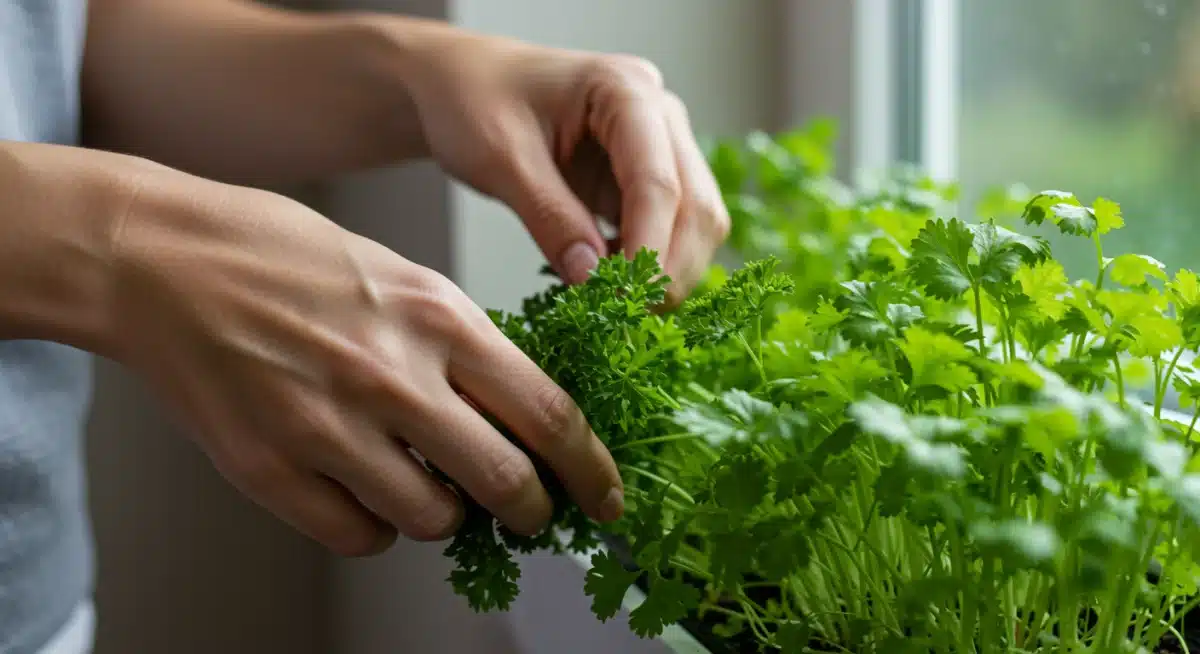
common pitfalls to avoid during your detox
Embarking on a natural food detox in Spring 2025 is a commendable step towards better health, but it’s important to be aware of common pitfalls that can derail your efforts or lead to discomfort. Avoiding these mistakes will ensure your detox is safe, effective, and a positive experience, fostering sustainable healthy habits rather than temporary fixes.
Many people approach detoxes with an ‘all or nothing’ mentality, which can be counterproductive. A gradual, mindful approach is often more successful and less shocking to the body. Understanding what to avoid helps you navigate the process smoothly and achieve your revitalization goals without unnecessary setbacks.
Over-restricting calories or nutrients
One of the biggest mistakes is to drastically cut calories or eliminate entire food groups without proper planning. A natural food detox is about nourishing your body, not starving it. Severe restriction can lead to nutrient deficiencies, muscle loss, and a slowed metabolism, making your body less efficient at detoxification.
- Ensure adequate protein: Include lean proteins like legumes, fish, or organic poultry to support cell repair.
- Don’t fear healthy fats: Avocados, nuts, and seeds provide essential fatty acids and satiety.
- Focus on whole foods: Prioritize nutrient-dense fruits, vegetables, and whole grains.
Listen to your body and ensure you are consuming enough calories to support your energy needs. The goal is to eat clean, not to eat less to the point of deprivation.
Ignoring hunger cues
While a detox might involve reducing certain cravings, it should not mean ignoring true hunger. If you feel genuinely hungry, eat a healthy, detox-friendly snack. Dismissing hunger can lead to overeating later or making poor food choices out of desperation. Pay attention to your body’s signals and respond with nourishing options.
Expecting instant results or a quick fix
Detoxification is a gradual process, not an overnight transformation. Expecting immediate, dramatic results can lead to disappointment and discourage you from continuing. The benefits of a natural food detox accumulate over time, leading to lasting improvements in energy, digestion, and overall health.
Focus on the journey and the positive changes you’re making to your lifestyle. Celebrate small victories and acknowledge that true revitalization is a continuous process of self-care and mindful living.
Not consulting a healthcare professional
Before embarking on any significant dietary changes, especially if you have underlying health conditions or are taking medications, it is crucial to consult with a doctor or a registered dietitian. They can provide personalized advice and ensure that the detox plan is safe and appropriate for your individual needs. Self-diagnosing or following extreme detox trends without professional guidance can be risky.
sustaining your revitalized self beyond spring 2025
The benefits of a Spring 2025 natural foods detox don’t have to end with the season. The true measure of a successful cleanse lies in its ability to inspire lasting, healthy habits that sustain your revitalized self throughout the year. Moving beyond the initial detox period into a lifestyle of continuous well-being requires mindful integration of the lessons learned and a commitment to ongoing self-care.
This phase is about translating temporary dietary and lifestyle adjustments into permanent improvements. It’s about finding a balance that allows you to enjoy food and life while maintaining the vibrant energy and clarity you gained during your detox. The goal is not to live in a perpetual state of detox, but to cultivate a lifestyle that minimizes the need for frequent, intensive cleanses.
Gradual reintroduction and mindful eating
After your detox, resist the urge to immediately revert to old eating habits. Instead, gradually reintroduce foods you temporarily avoided, paying close attention to how your body reacts. This mindful reintroduction helps you identify any sensitivities or foods that might cause discomfort, allowing you to make informed decisions about your long-term diet.
- Introduce one food at a time: Allow a few days between new foods to observe reactions.
- Listen to your body: Pay attention to digestive issues, energy levels, and skin changes.
- Practice mindful eating: Eat slowly, savor your food, and stop when you’re full, not stuffed.
This process transforms your eating habits into a more intuitive and responsive practice, where you choose foods that truly nourish and energize you.
Maintaining a whole-foods-focused diet
The core principle of your spring detox – prioritizing natural, whole foods – should become a permanent fixture in your diet. Continue to fill your plate with a variety of fruits, vegetables, whole grains, lean proteins, and healthy fats. This foundation ensures a consistent intake of essential nutrients and fiber, supporting ongoing detoxification and overall health.
While occasional indulgences are perfectly fine, let them be the exception rather than the rule. Focus on making healthy choices the default, ensuring your body continues to receive the fuel it needs to thrive.
Ongoing hydration and stress management
The importance of hydration and stress reduction extends far beyond the detox period. Make drinking plenty of water a non-negotiable daily habit. Continue to find and practice effective stress management techniques that work for you, whether it’s daily meditation, spending time in nature, or engaging in hobbies.
These lifestyle pillars are crucial for preventing the accumulation of toxins and maintaining mental and emotional balance. They are not merely detox tools but fundamental components of a healthy, fulfilling life.
Regular physical activity and continuous learning
Keep moving your body regularly. Physical activity remains a powerful tool for circulation, lymphatic drainage, and mood regulation. Explore different forms of exercise to keep things interesting and challenging. Furthermore, continue to educate yourself about nutrition and wellness. The more you learn, the better equipped you’ll be to make informed choices that support your long-term health goals.
Sustaining a revitalized self is an ongoing journey of self-discovery and commitment. By integrating these practices, you can ensure that the positive changes initiated during your Spring 2025 detox become a lasting foundation for a healthier, more vibrant you.
| Key Aspect | Brief Description |
|---|---|
| Natural Foods Focus | Emphasizes seasonal fruits, vegetables, and whole grains to support the body’s natural cleansing mechanisms. |
| Hydration Importance | Crucial for flushing toxins, aiding nutrient transport, and supporting organ function; includes water, herbal teas, infused water. |
| Lifestyle Integration | Beyond diet, incorporates sleep, exercise, and stress management for holistic well-being and enhanced detoxification. |
| Sustainable Habits | Encourages translating short-term detox practices into long-term, mindful choices for continuous health and vitality. |
Frequently asked questions about spring detox
A spring natural food detox typically ranges from 7 to 21 days, depending on individual health goals and body response. A shorter duration is excellent for beginners, while experienced individuals might opt for a longer, more comprehensive cleanse under professional guidance to ensure safety and effectiveness.
It’s generally recommended to reduce or eliminate coffee during a detox, as caffeine can strain the liver and adrenal glands. If you’re a regular coffee drinker, consider gradually reducing your intake or switching to herbal teas to avoid withdrawal symptoms and support your body’s cleansing process.
Common signs of detox can include headaches, fatigue, skin breakouts, or changes in bowel movements, often referred to as a ‘healing crisis.’ These are usually temporary as your body adjusts and eliminates toxins. Staying hydrated and resting can help manage these symptoms effectively.
For a natural food detox, high-quality, whole foods provide most of the necessary nutrients. Supplements are generally not essential unless there’s a specific deficiency or a healthcare professional recommends them. Focus on nutrient-dense foods first to support your body’s natural detoxification pathways effectively and safely.
To prevent feeling deprived, focus on the abundance of delicious, natural foods you can enjoy. Experiment with new recipes, use fresh herbs and spices for flavor, and ensure your meals are satisfying and varied. Mindful eating and focusing on the positive impact on your health can also significantly reduce feelings of deprivation.
Conclusion
Embracing a Spring 2025 natural foods detox is more than just a temporary diet; it’s an opportunity to reset and revitalize your entire system, laying the groundwork for sustained well-being. By focusing on seasonal produce, prioritizing hydration, and integrating supportive lifestyle practices, you empower your body’s innate cleansing abilities. This holistic approach, grounded in mindful eating and self-care, not only helps shed the sluggishness of winter but also cultivates lasting habits that foster vibrant health and sustained energy throughout the year. Remember, the journey to a revitalized self is continuous, built on consistent, informed choices that nourish both body and mind.
